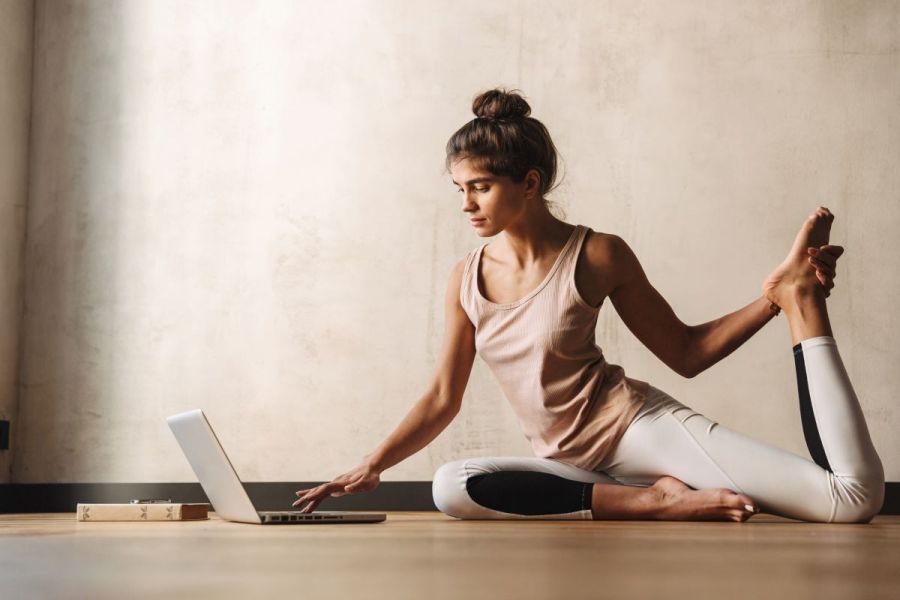Self-practice is one of the best ways to deepen your yoga experience, but how do you go about designing your own sequences? We asked yoga expert Yesim Yuva, who explains how to start practicing yoga by yourself at home…
Have you ever gone to a yoga class that didn’t match your mood? Maybe you were feeling stressed and those fast-paced sequences simply made your racing heart beat even faster. Or perhaps you were feeling sluggish but the teacher focused on calming poses that left you lethargic rather than uplifted.
Developing a home yoga self practice can address all these scenarios and more – from allowing you to create sequences that meet your specific fitness goals, to helping you build a deeper connection with your inner self. But if you’re not a trained yoga teacher, where should you start?
Related content:
- What is yoga? Benefits & basic principles for beginners
- Yogic breathing techniques: how to breathe in yoga
- Sun Salutation A: basic sequence for yoga beginners
How to start yoga self practice:
First of all, find your inspiration. ‘If you want to create your own yoga style at home, find out what works for you,’ says yoga teacher Yesim Yuva (yuvayogalife.com). ‘I tried many types of yoga to find my own style – a mixture of vinyasa and hatha.’ If you haven’t already, take a few different classes – either in person or online – and see which style resonates most. You might find power yoga best matches your fitness personality, or maybe alignment- and health-based Iyengar suits you better.
‘It also helps to have an intention,’ advises Yuva. ‘When you get on your mat, close your eyes so you connect to the real purpose of yoga, which is to create stillness in your mind. Then, chose an intention that touches your heart – it may be “I really want to move my body”, or it could be something more emotional, such as “I want to get rid of negative thoughts”.’
Try this 15-minute energising yoga flow workout
How to create a yoga sequence:
Once you’ve decided on an intention, build moves around that – forward folds are relaxing, for example, back bends and inversions are more invigorating, while standing poses build strength, and balances aid focus. When it comes to choosing the order of poses, you may remember some asanas always seem to go together, such as up dog into down dog. These are often based around counterposes, and are helpful because they release tension that may have accumulated in the previous pose.
‘A classic example is cat/cow, where you open your heart and then close it again, or headstand followed by child’s pose, where you release your neck and relax for 30-60 seconds,’ explains Yuva. In general, make the transition gentle, so rather than going from a deep backbend to a deep forward bend (e.g. wheel to seated forward fold), first do a pose with a neutral spine, such as staff pose, so the body has time to acclimatise.
Related: Can you lose weight doing yoga?
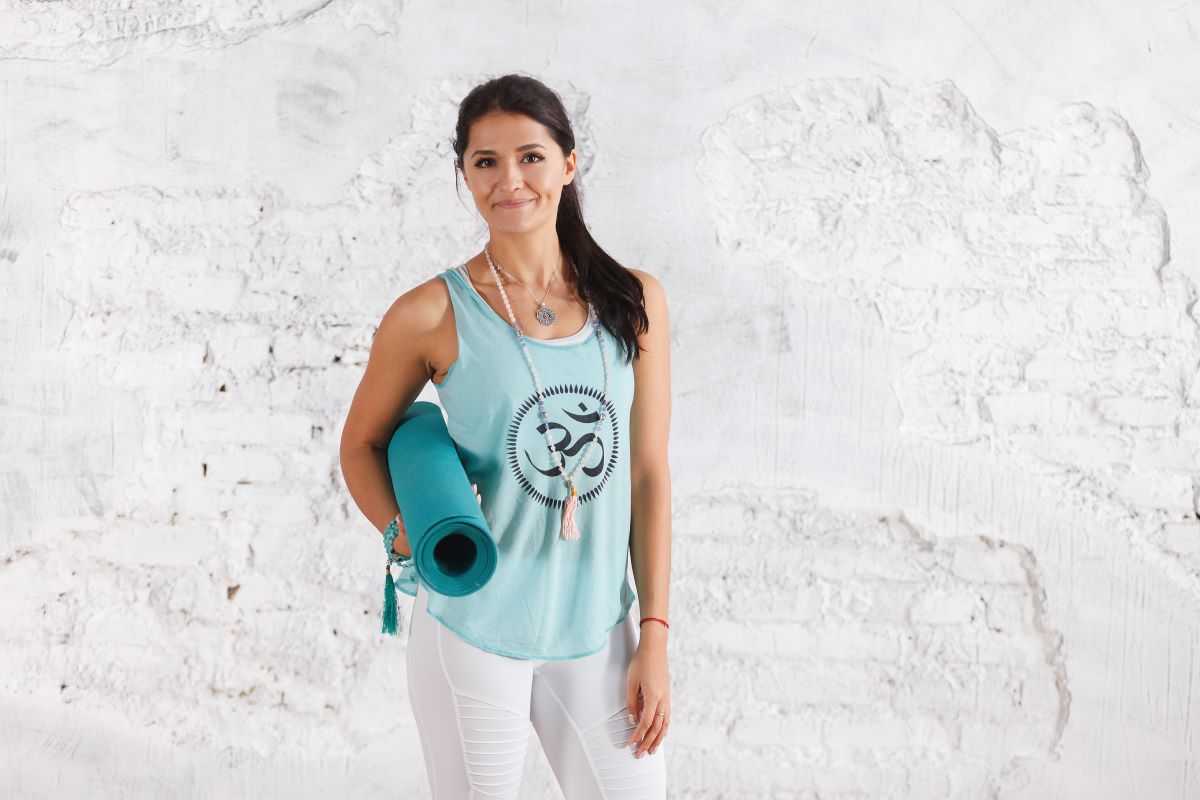
Tailoring your yoga self practice:
Try tailoring your yoga self practice sessions according to your needs, with these tips from Yesim Yuva.
Yoga self practice for strength:
Focus on poses such as plank, downward dog, warrior I and II, boat and crow, plus balancing poses (maybe tree or dancer, depending on your experience) and inversions.
Yoga self-practice for mornings:
Start with a slow sun salute, then begin to move a little faster, adding in some vinyasas – try warrior II and reverse warrior (on both sides). Introduce some twists to wake up your organs, then do one inversion (headstand, shoulder stand or legs up the wall) and one balance pose, to give you focus for the day.
Yoga self-practice for evenings:
Firstly, connect to your breath and let go – letting all your stress sink into the ground. Then warm up your spine, for example, lying on your back, knees to chest, rolling side to side and some supine twists. Make the main focus stretching poses, releasing shoulders, spine and hips. Include a breathing exercise that calms you and finish with some meditation.
Discover the best yoga poses for improving sleep quality
Yoga self practice safety tips
As you won’t have a teacher present, start slowly by first doing simpler variations of more challenging poses. ‘If you want to do wheel, for example, start with bridge and bridge variations,’ advises Yuva. ‘Or for deep hip openers such as low lunge, do standing hip swings first, then butterfly and bent-leg down dog. By coming slowly into a pose, you give your body time to open up. That way it will feel better and you won’t get frustrated or want to come out of the pose straight away.’
How long should yoga self practice sessions be?
When you first start, keep your sessions short – no more than 20-30 minutes – and incorporate all elements of a class for maximum benefits. ‘To begin, spend three minutes connecting to your breath and setting your intention,’ suggests Yuva. ‘Then warm up your neck, shoulders, spine and hips for seven minutes before moving on to five rounds of sun salutes, adding variations in each time – try different arm positions for low lunge, raising alternate legs in down dog, and so on. Move on to some vinyasas [linking a few poses together, such as warrior II, extended side stretch, triangle], twists and balancing poses, then cool down with some stretches on the floor, and finish with three to five minutes in savasana.’
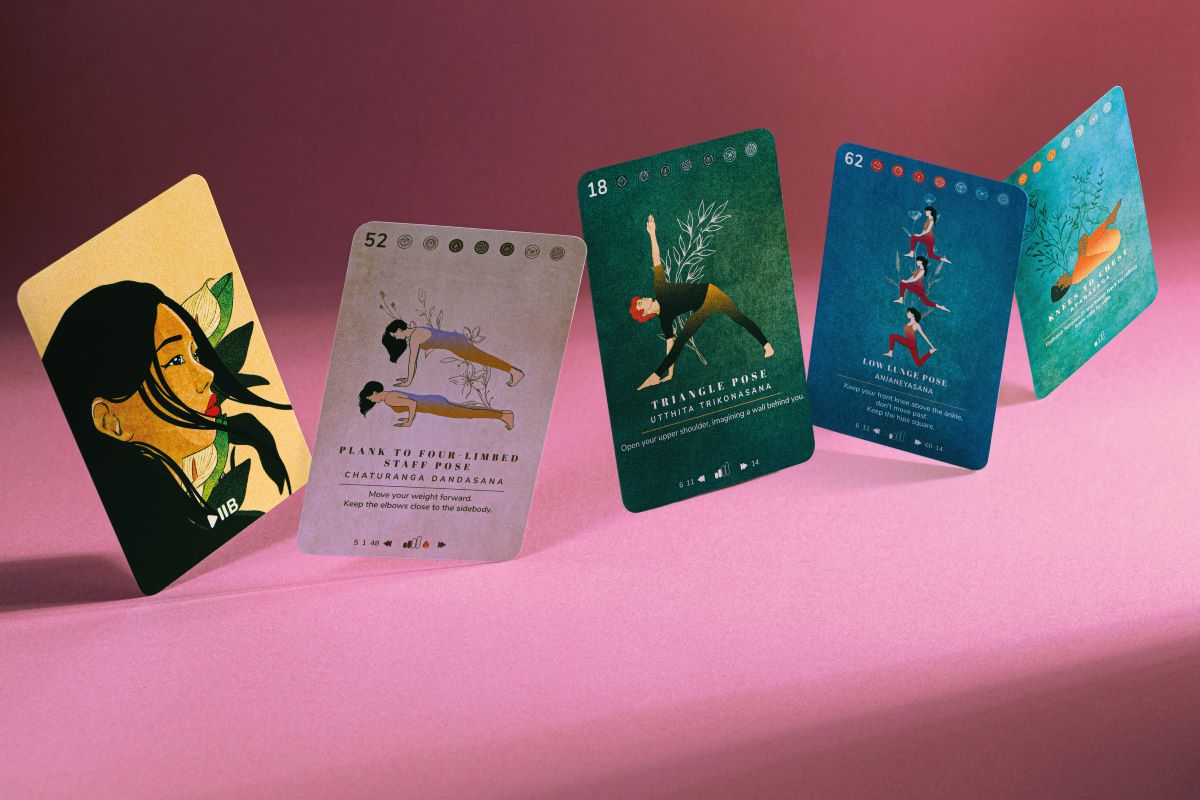
Remembering yoga sequences:
If remembering a complete sequence feels a little daunting, using a yoga deck can act as an aide-mémoire, as you lay the cards in order next to your mat. We love the PlayPauseBe decks (from £38), which offer regular asanas as well as a new Yin deck. The cards are colour-coded (warm-up, backbends, balances, etc), and list the benefits of the pose on the reverse. They also have suggestions for preparatory poses and follow-up moves, which makes designing your own sequences so much easier.
Finally, always accept your experience – sometimes you’ll feel strong, other days you may need a more soothing practice. The beauty of yoga is it’s there to meet you, wherever you are, and support you in developing a deeper, kinder connection to yourself and others. Ready to give it a go? Turn the page for a sample yoga sequence…
Yoga self-practice: 20-minute example sequence
Discover how to put the elements of a home practice together with this 20-minute sequence by Yesim Yuva.
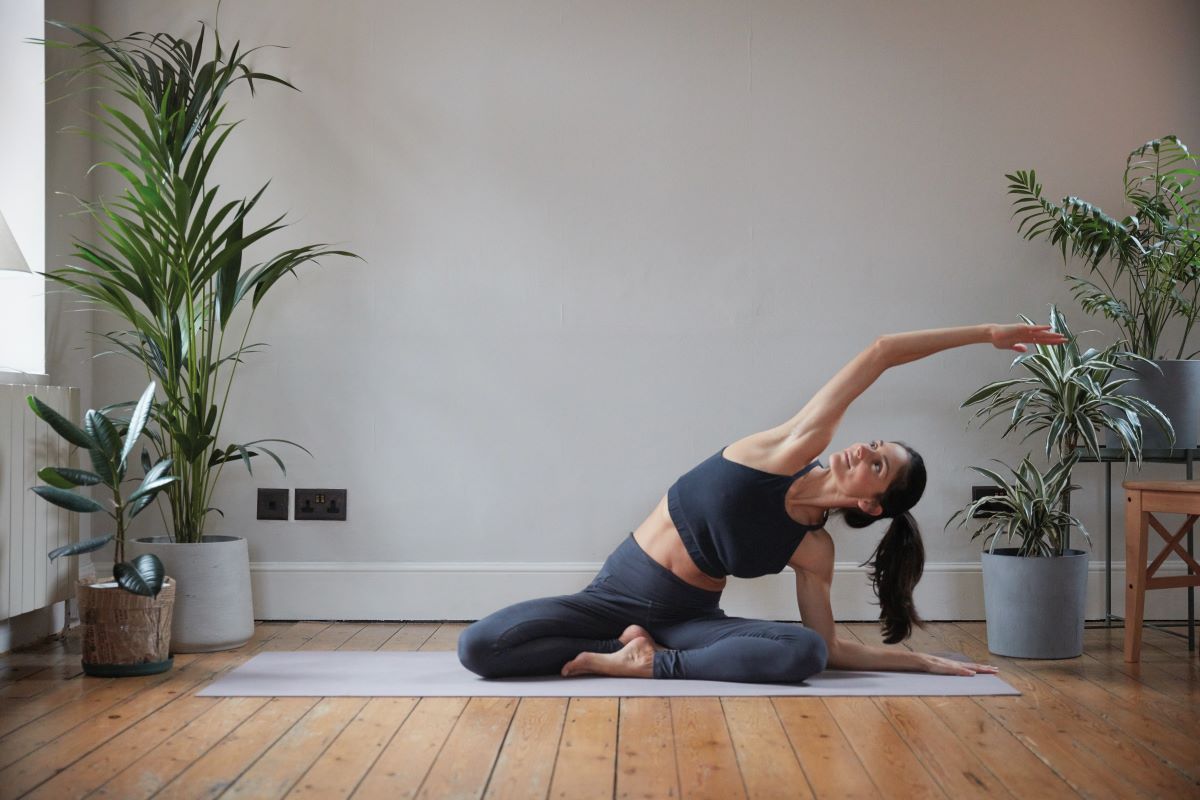
1. Prepare mind and body
- Come into a seated cross-legged position and roll your shoulders back. Take three deep inhalations and exhalations. Keep your eyes closed and look inward. How do you feel today? Create body-mind awareness. Stay here for several breaths, just observing whatever is happening inside. Set an intention for your practice. Inhale and bring your arms up over your head, exhale hands back to your heart into namaste [prayer position].
- Always working with your breath, side stretch by placing one hand on the floor and bringing the other arm up over your head and stretch to the side. Make sure to ground through both buttocks. With every exhalation, come into a deeper stretch, then change sides.
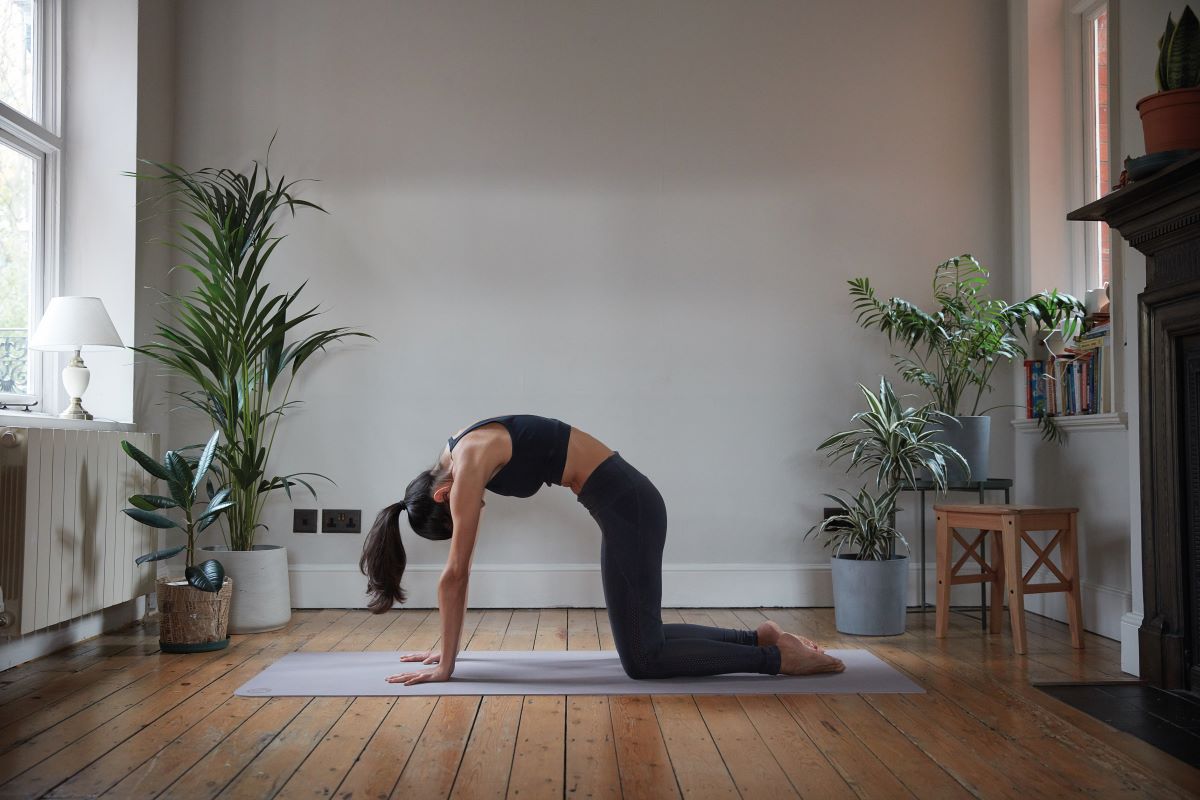
- In table top position, stretch one leg back and the opposite arm to the front. Find your balance by gazing to the mat, then change sides. Spend some time in cat/cow, inhaling to open up your chest, exhaling to round your back, three times. Return to a neutral spine.
- From table top, push your hips up into downward facing dog. Keep your knees bent in the beginning, pressing one heel after the other into the ground. After a few moments, extend both heels evenly into the mat and feel a nice stretch in your back, shoulders and hamstrings.
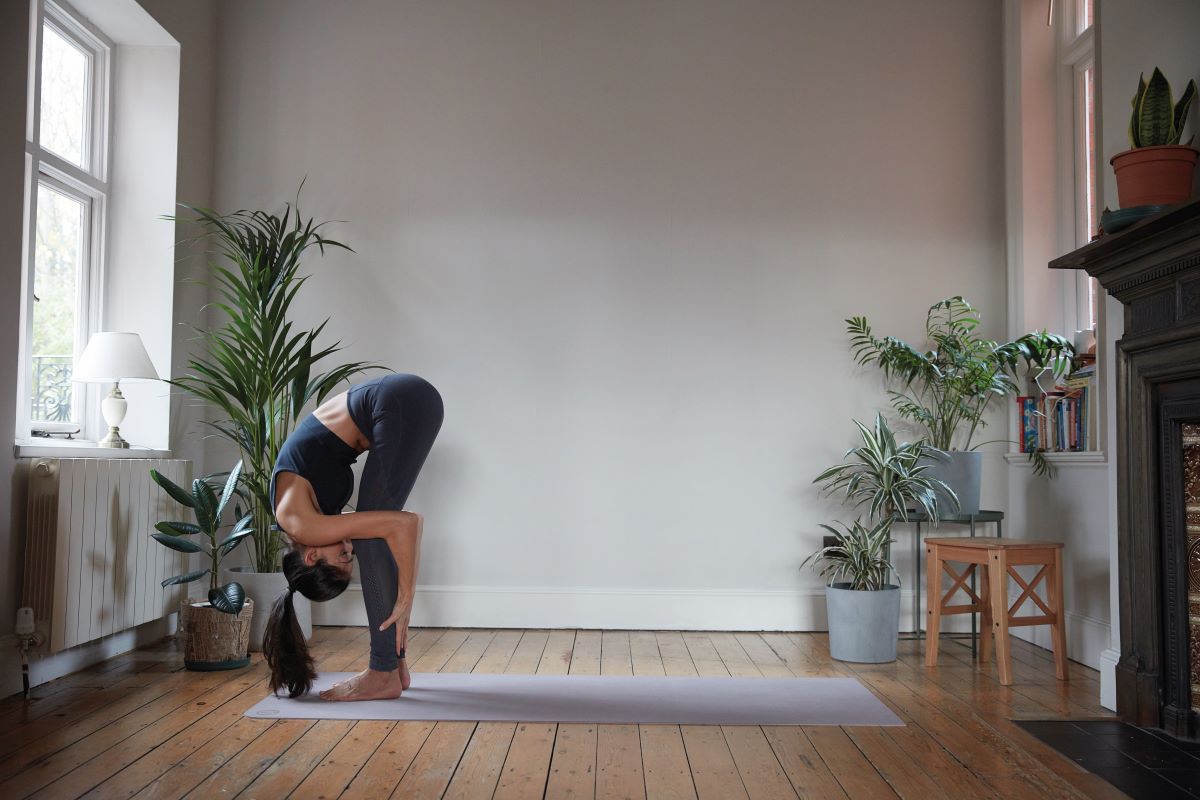
2. Standing flow
- Slowly walk forward with your feet to the front of your mat and lower into forward fold for a couple of breaths – your head is loose, knees may be bent, arms are hanging. Give yourself a little hug.
- Slowly roll up vertebrae by vertebrae into a standing position then, with the next inhalation, bring your hands up to the sky, exhale hands back to the heart.
- Inhale, bring your arms up, exhale forward fold. Inhale halfway up, exhale forward fold.
- Step your right leg back into low lunge. Lower onto your right knee, hands on the floor, and relax into your hips. Take a couple of breaths here.
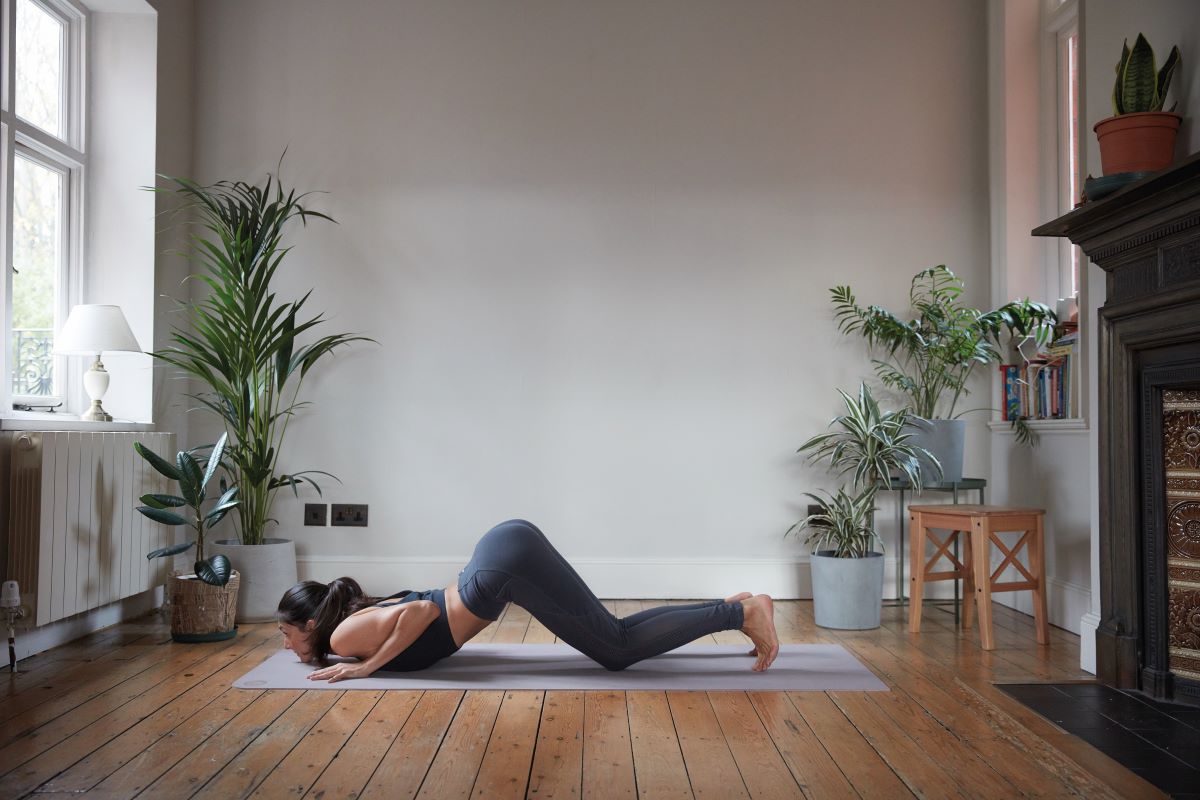
- Step your left leg back into plank, activate your core, find your strength, then bring your knees, chest, chin to the floor, flowing through into cobra, gently opening your heart. Push back into downward facing dog, finding length in your spine and hamstrings.
- Step your right leg between your hands to come into low lunge, left knee to the floor. Open your chest, and release into your hips, before stepping your left foot forward to come into forward fold.
- Lower into a yogi squat, then bring your hands to your heart centre and gently press with your elbows into the insides of your knees, while lengthening your spine. Stay here for a couple of breaths.
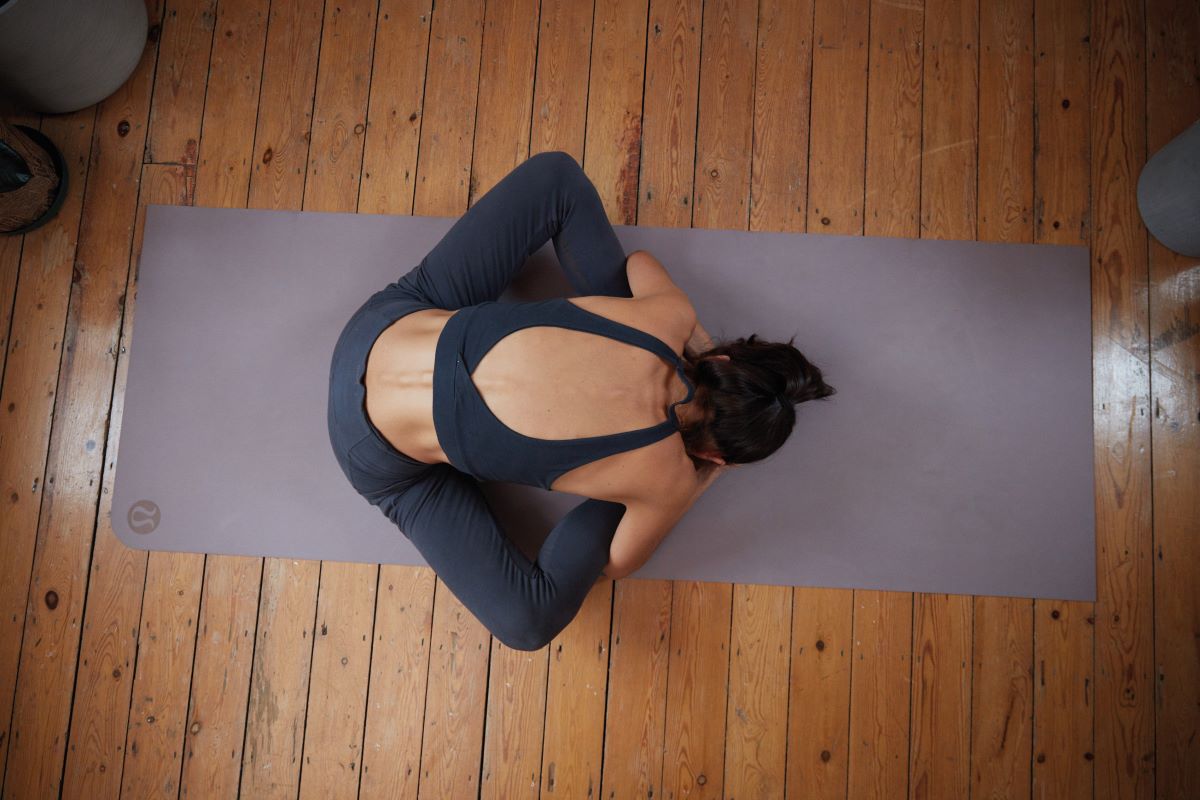
3. Slowing down
- Lower your buttocks to the mat, open up your legs to the side into wide-angle seated pose with your feet flexed and your back straight.
- Inhale, lift your arms towards the sky, then exhale into seated forward fold, with your knees bent and feet together. Lower your upper body towards the mat and place your head over your feet if you can. Relax here for several breaths.
- Slowly raise your spine and come into a seated twist by extending your left leg and placing your right foot flat on the mat on the outside of your right knee. Inhale and bring your left arm up. Exhale, bring it down and place your elbow on the outside of your right knee. Turn to the right with your chest and head. Stay in this pose for about one minute and breathe. Slowly come out of the pose and repeat on the other side.
- Lie flat on your back and come into happy baby. Bend your knees towards your armpits with the soles of your feet facing the ceiling. Flex your feet and hold them with your hands. Gently rock from side to side. Keep breathing deeply for five-to-10 breaths.
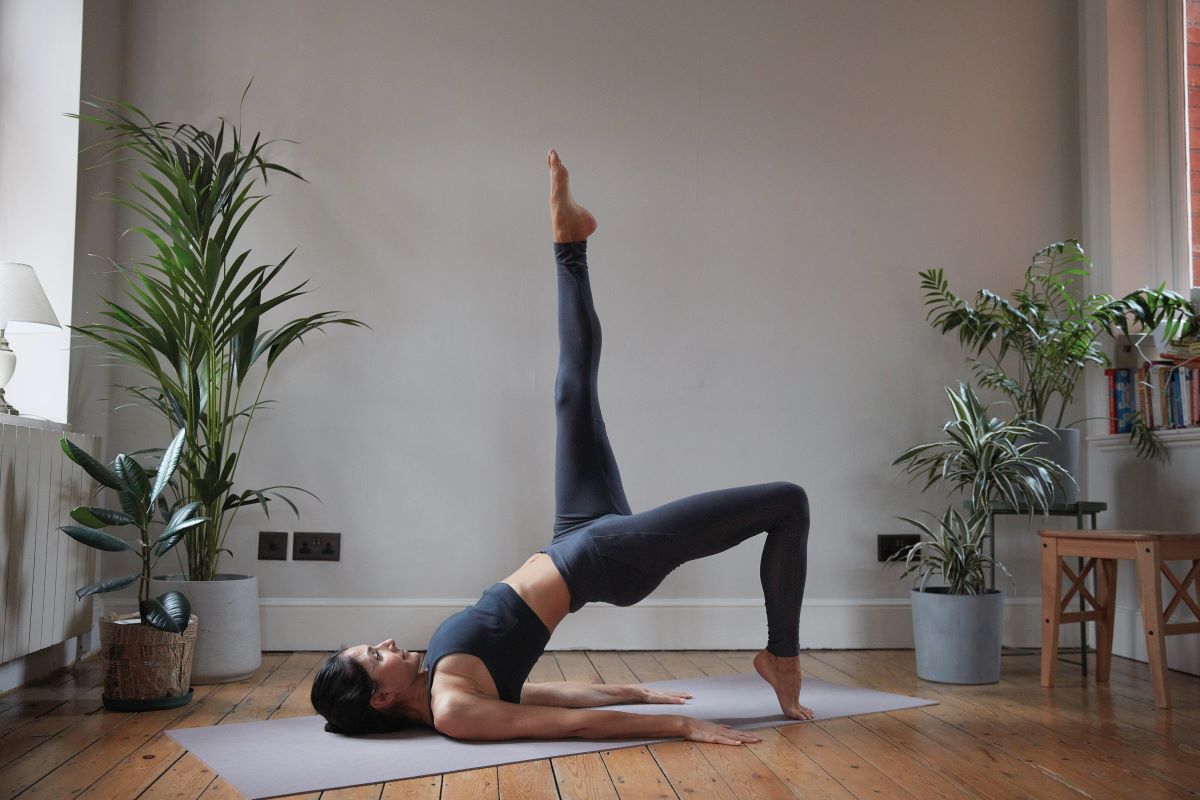
- Release back on to the mat for bridge pose. Bend your knees, feet flat on the ground close to your buttocks. Place your hands next to your feet and gently lift your hips. Alternatively, raise one leg, then the other. Slowly lower to the floor and gently rock from side to side.
- To finish, come into savasana with your legs separate, and feet falling open to the sides. Lengthen your arms alongside your torso, a few inches from your body, palms facing up. Close your eyes and relax your body, allowing it to gradually soften. Breathe naturally for at least five minutes. To come out of the pose, deepen your breath, wiggle your fingers and toes, bring your knees to your chest and roll onto one side. Remain here for a couple of breaths, then slowly come up into a seated cross-legged position.
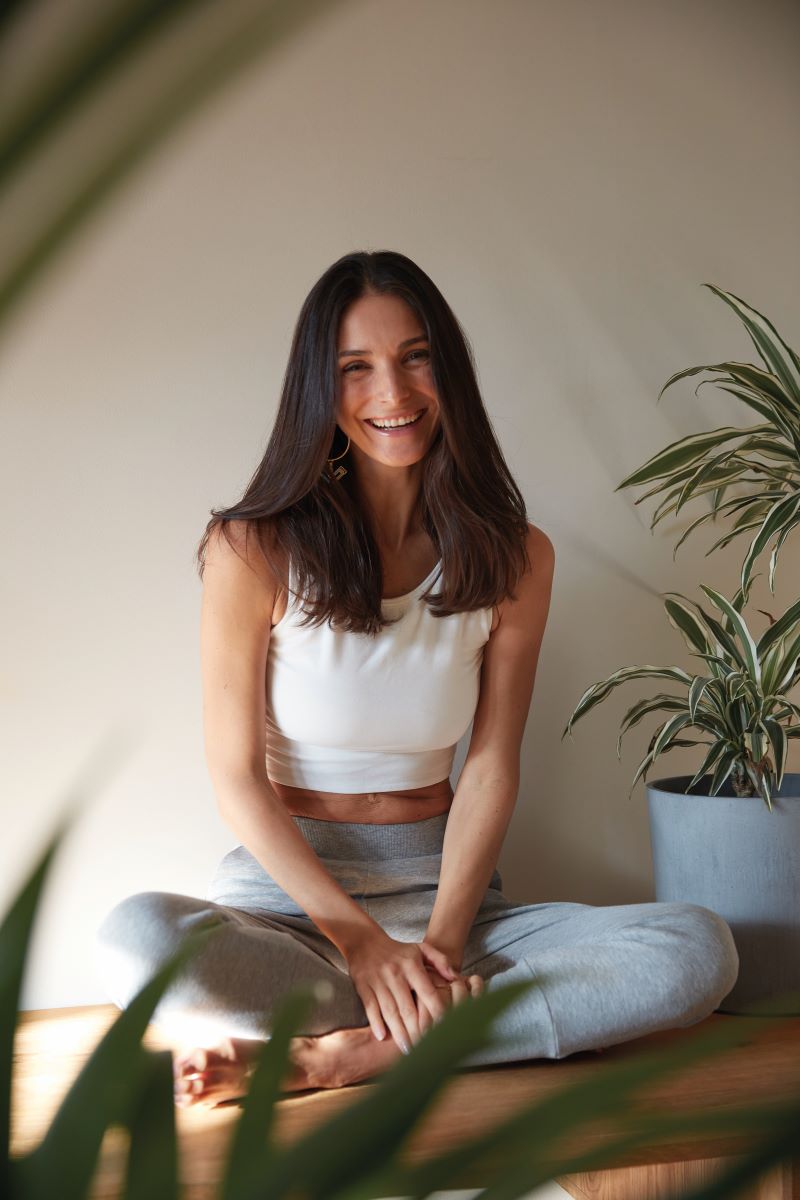 4. Reflection
4. Reflection
- Keep your eyes closed and feel the difference in your mind and body. Feel free to stay here as long as you can just observing your thoughts, emotions and body sensations. When you feel ready, bow your head to your heart and thank yourself for your practice.
Meet the expert: Yesim Yuva is a yoga and meditation teacher in London. You can find details of her online classes at yuvayogalife.com. Her next retreats take place in Turkey and Bali. Follow her on Instagram at @yesim_yuva

